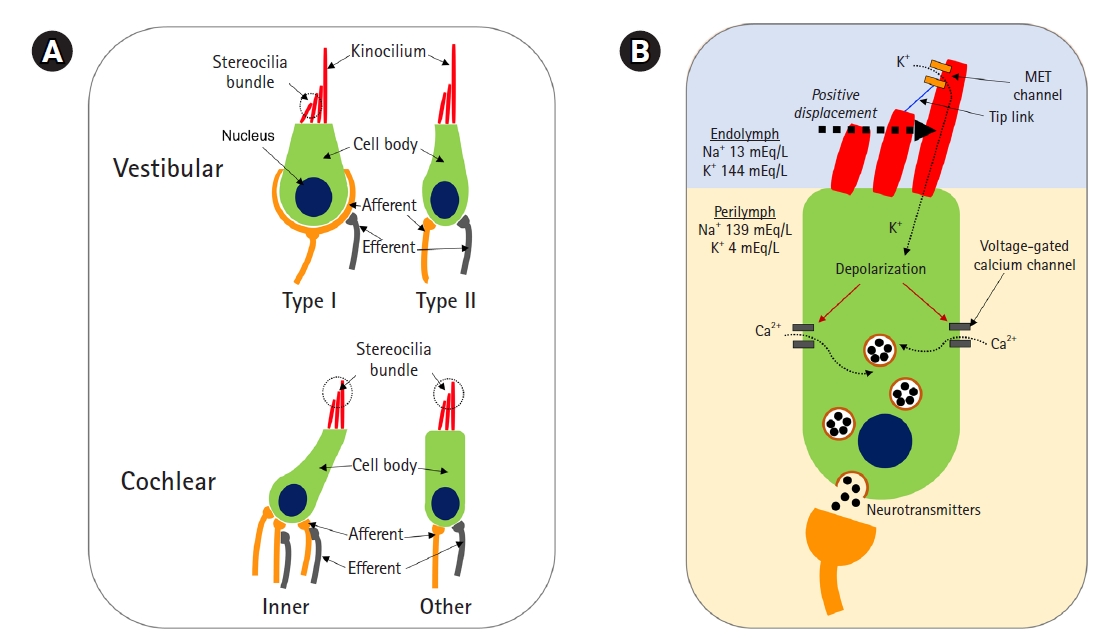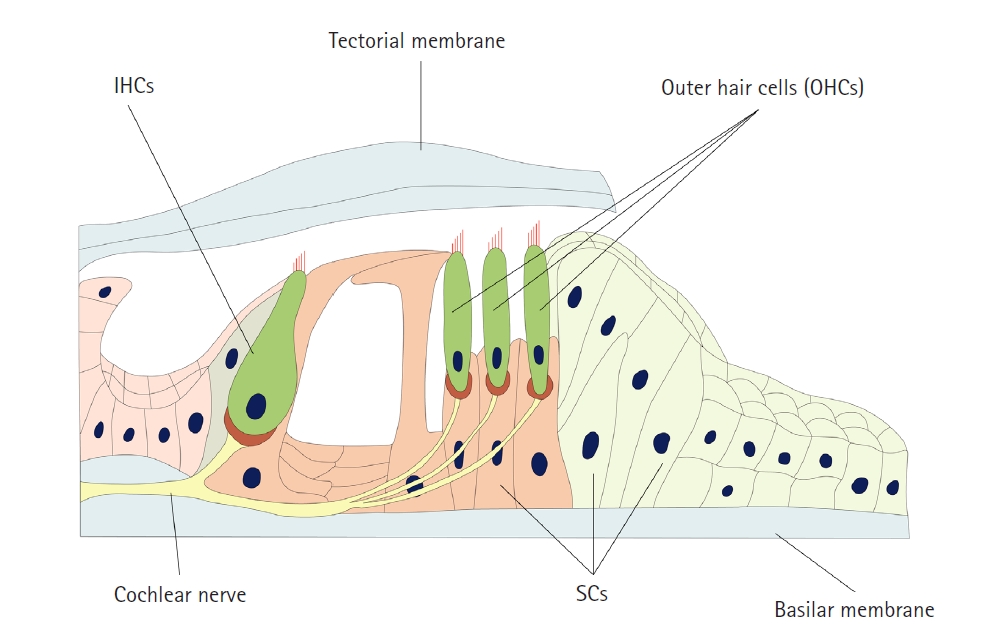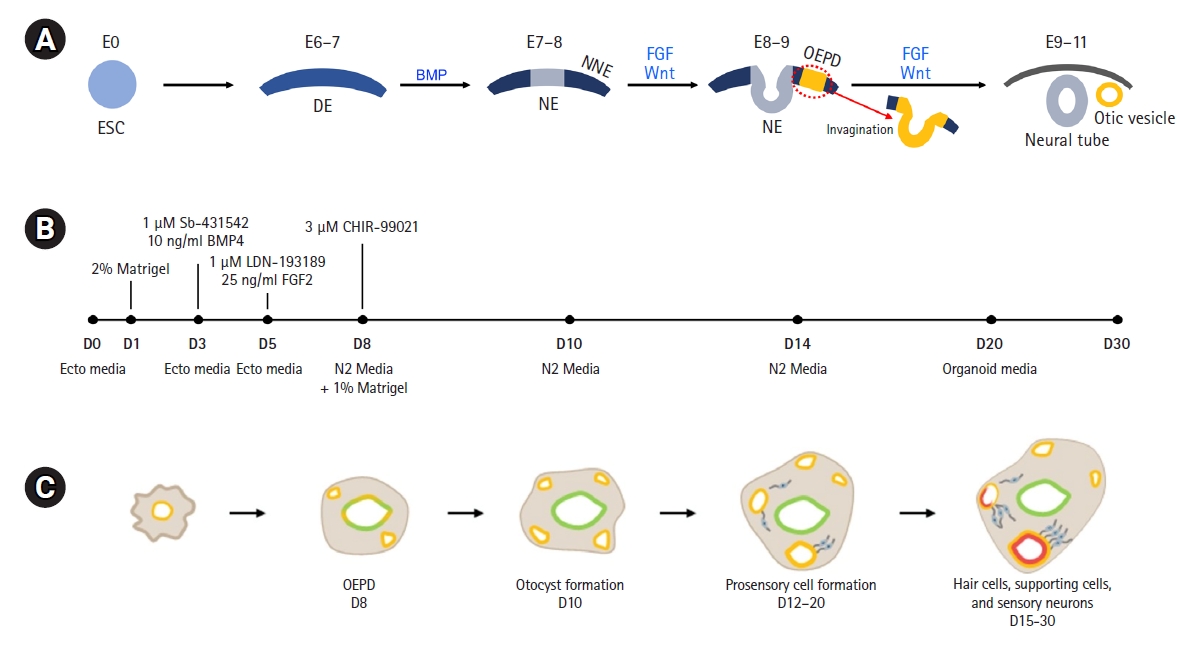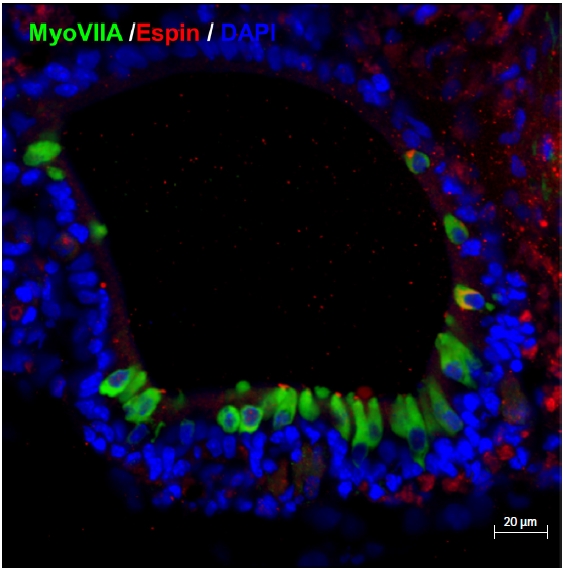1. Torres M, Giráldez F. The development of the vertebrate inner ear. Mech Dev 1998;71:5-21.


3. Hudspeth AJ. How the ear’s works work: mechanoelectrical transduction and amplification by hair cells. C R Biol 2005;328:155-62.


5. Schwander M, Kachar B, Müller U. Review series: the cell biology of hearing. J Cell Biol 2010;190:9-20.


8. Helmchen C, Klinkenstein JC, Krüger A, Gliemroth J, Mohr C, Sander T. Structural brain changes following peripheral vestibulo-cochlear lesion may indicate multisensory compensation. J Neurol Neurosurg Psychiatry 2011;82:309-16.


9. Parietti-Winkler C, Gauchard GC, Simon C, Perrin PP. Long-term effects of vestibular compensation on balance control and sensory organisation after unilateral deafferentation due to vestibular schwannoma surgery. J Neurol Neurosurg Psychiatry 2010;81:934-6.


10. zu Eulenburg P, Stoeter P, Dieterich M. Voxel-based morphometry depicts central compensation after vestibular neuritis. Ann Neurol 2010;68:241-9.


11. Mahboubi H, Lin HW, Bhattacharyya N. Prevalence, characteristics, and treatment patterns of hearing difficulty in the United States. JAMA Otolaryngol Head Neck Surg 2018;144:65-70.


12. Lin FR, Thorpe R, Gordon-Salant S, Ferrucci L. Hearing loss prevalence and risk factors among older adults in the United States. J Gerontol A Biol Sci Med Sci 2011;66:582-90.


16. Stone JS, Cotanche DA. Hair cell regeneration in the avian auditory epithelium. Int J Dev Biol 2007;51:633-47.


18. Yang J, Cong N, Han Z, Huang Y, Chi F. Ectopic hair cell-like cell induction by Math1 mainly involves direct transdifferentiation in neonatal mammalian cochlea. Neurosci Lett 2013;549:7-11.


24. Ohnishi H, Skerleva D, Kitajiri S, Sakamoto T, Yamamoto N, Ito J, et al. Limited hair cell induction from human induced pluripotent stem cells using a simple stepwise method. Neurosci Lett 2015;599:49-54.


26. Ding J, Tang Z, Chen J, Shi H, Chen J, Wang C, et al. Induction of differentiation of human embryonic stem cells into functional hair-cell-like cells in the absence of stromal cells. Int J Biochem Cell Biol 2016;81(Pt A):208-22.


31. Nie J, Hashino E. Generation of inner ear organoids from human pluripotent stem cells. Methods Cell Biol 2020;159:303-21.


33. Whitfield TT. Development of the inner ear. Curr Opin Genet Dev 2015;32:112-8.


36. Holley MC, Lawlor PW. Production of conditionally immortalised cell lines from a transgenic mouse. Audiol Neurootol 1997;2:25-35.


37. Kalinec F, Kalinec G, Boukhvalova M, Kachar B. Establishment and characterization of conditionally immortalized organ of corti cell lines. Cell Biol Int 1999;23:175-84.


39. Ton C, Parng C. The use of zebrafish for assessing ototoxic and otoprotective agents. Hear Res 2005;208:79-88.


42. Low W, Dazert S, Baird A, Ryan AF. Basic fibroblast growth factor (FGF-2) protects rat cochlear hair cells in organotypical culture from aminoglycoside injury. J Cell Physiol 1996;167:443-50.


43. Corbacella E, Lanzoni I, Ding D, Previati M, Salvi R. Minocycline attenuates gentamicin induced hair cell loss in neonatal cochlear cultures. Hear Res 2004;197:11-8.


50. Sakamoto T, Nakagawa T, Endo T, Kim TS, Iguchi F, Naito Y, et al. Fates of mouse embryonic stem cells transplanted into the inner ears of adult mice and embryonic chickens. Acta Otolaryngol Suppl 2004;(551):48-52.

51. Hu Z, Ulfendahl M, Olivius NP. Central migration of neuronal tissue and embryonic stem cells following transplantation along the adult auditory nerve. Brain Res 2004;1026:68-73.


52. Regala C, Duan M, Zou J, Salminen M, Olivius P. Xenografted fetal dorsal root ganglion, embryonic stem cell and adult neural stem cell survival following implantation into the adult vestibulocochlear nerve. Exp Neurol 2005;193:326-33.


54. Praetorius M, Vicario I, Schimmang T. Efficient transfer of embryonic stem cells into the cochlea via a non-invasive vestibular route. Acta Otolaryngol 2008;128:720-3.


55. Zhao LD, Li L, Wu N, Li DK, Ren LL, Guo WW, et al. Migration and differentiation of mouse embryonic stem cells transplanted into mature cochlea of rats with aminoglycoside-induced hearing loss. Acta Otolaryngol 2013;133:136-43.


57. Okano T, Nakagawa T, Endo T, Kim TS, Kita T, Tamura T, et al. Engraftment of embryonic stem cell-derived neurons into the cochlear modiolus. Neuroreport 2005;16:1919-22.


59. Matsumoto M, Nakagawa T, Kojima K, Sakamoto T, Fujiyama F, Ito J. Potential of embryonic stem cell-derived neurons for synapse formation with auditory hair cells. J Neurosci Res 2008;86:3075-85.


70. Nakajima Y. Signaling regulating inner ear development: cell fate determination, patterning, morphogenesis, and defects. Congenit Anom (Kyoto) 2015;55:17-25.


71. Bok J, Raft S, Kong KA, Koo SK, Dräger UC, Wu DK. Transient retinoic acid signaling confers anterior-posterior polarity to the inner ear. Proc Natl Acad Sci U S A 2011;108:161-6.


72. Abelló G, Khatri S, Radosevic M, Scotting PJ, Giráldez F, Alsina B. Independent regulation of Sox3 and Lmx1b by FGF and BMP signaling influences the neurogenic and non-neurogenic domains in the chick otic placode. Dev Biol 2010;339:166-78.


82. Carlson ML. Cochlear implantation in adults. N Engl J Med 2020;382:1531-42.


83. Teagle HF, Park LR, Brown KD, Zdanski C, Pillsbury HC. Pediatric cochlear implantation: a quarter century in review. Cochlear Implants Int 2019;20:288-98.


84. Yoon PJ. Pediatric cochlear implantation. Curr Opin Pediatr 2011;23:346-50.


85. Claes AJ, Van de Heyning P, Gilles A, Van Rompaey V, Mertens G. Cognitive outcomes after cochlear implantation in older adults: a systematic review. Cochlear Implants Int 2018;19:239-54.


87. Hempel JM, Simon F, Müller JM. Extended applications for cochlear implantation. Adv Otorhinolaryngol 2018;81:74-80.


89. Gaylor JM, Raman G, Chung M, Lee J, Rao M, Lau J, et al. Cochlear implantation in adults: a systematic review and meta-analysis. JAMA Otolaryngol Head Neck Surg 2013;139:265-72.


91. Choo OS, Kim H, Kim YJ, Roh J, Jang JH, Park HY, et al. Effect of age at cochlear implantation in educational placement and peer relationships. Ear Hear 2021;42:1054-61.


92. Kim H, Ha J, Gil ES, Jang JH, Park HY, Choung YH. Selection of the optimal first ear for sequential bilateral cochlear implantation in children. Ear Nose Throat J 2021 Dec 13 [Epub].
https://doi.org/10.1177/01455613211064012.

93. Jang JH, Choo OS, Kim H, Park HY, Choung YH. Round window membrane visibility related to success of hearing preservation in cochlear implantation. Acta Otolaryngol 2019;139:618-24.


94. Jang JH, Mun HA, Choo OS, Park HY, Choung YH. The speech perception after cochlear implantation: the hearing gain difference according to the implant systems is important? Auris Nasus Larynx 2019;46:330-4.


95. Kim H, Choo OS, Ha J, Jang JH, Park HY, Choung YH. A new CT parameter for predicting residual hearing preservation in cochlear implantation: the “basal turn-facial ridge angle”. Otol Neurotol 2021;42:e161-7.


96. Astolfi L, Simoni E, Giarbini N, Giordano P, Pannella M, Hatzopoulos S, et al. Cochlear implant and inflammation reaction: safety study of a new steroid-eluting electrode. Hear Res 2016;336:44-52.


97. Dhanasingh A, Hochmair I. Drug delivery in cochlear implantation. Acta Otolaryngol 2021;141(sup1):135-56.

98. Manrique-Huarte R, Zulueta-Santos C, Calavia D, Linera-Alperi MÁ, Gallego MA, Jolly C, et al. Cochlear implantation with a dexamethasone eluting electrode array: functional and anatomical changes in non-human primates. Otol Neurotol 2020;41:e812-22.


100. Lee MY, Kim YC, Jang J, Jung JY, Choi H, Jang JH, et al. Dexamethasone delivery for hearing preservation in animal cochlear implant model: continuity, long-term release, and fast release rate. Acta Otolaryngol 2020;140:713-22.


























 PDF Links
PDF Links PubReader
PubReader ePub Link
ePub Link Full text via DOI
Full text via DOI Download Citation
Download Citation Print
Print



